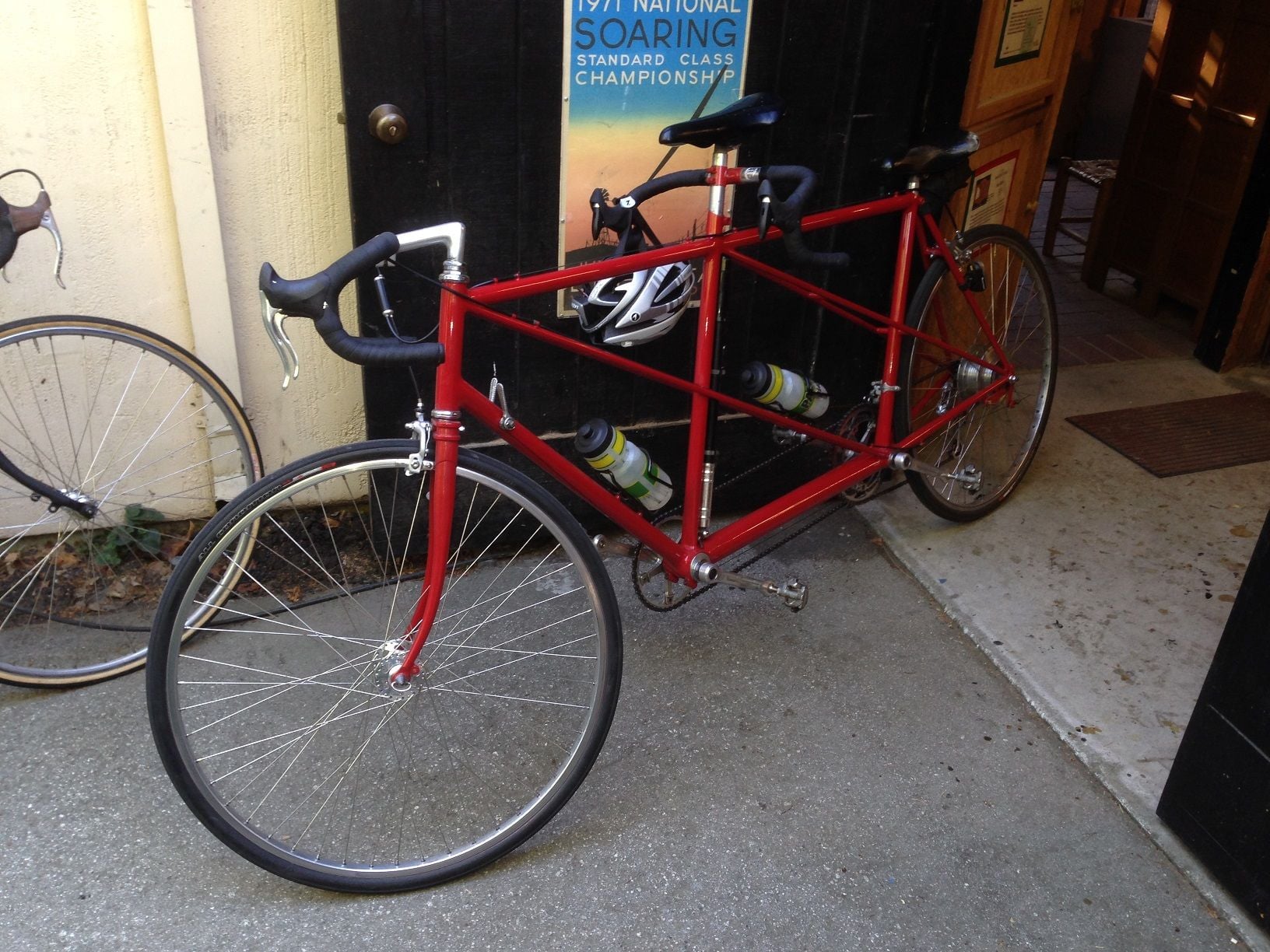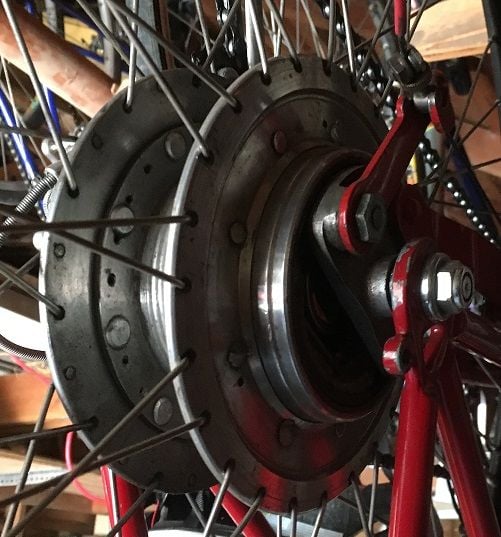Originally Posted by
Markeologist
Scanning the old posts on Ritchey tandems given my recent purchase, I asked about your early Ritchey earlier this morning, then I found this picture..."T. Ritchey" frame decal...wow. Still like to know what components you have, in particular the crankset. Glad to read you were keeping. We rode a lot of Norcal tandem club rides in the late 80s/early 90s and there was a couple who rode a red burgundy red Ritchey...you two perhaps?
Sorry that I missed your question last week. As I described in another thread (
Bad things can happen) we fell and broke my wife's hip in early June. Since then tandems have not been a big part of our lives.
The components on our original Ritchey tandem, built back in 1977, were mostly the usual Campagnolo nuovo record stuff people put on good bike back in the 70's. The drive train is based on standard Campagnolo cranksets, with spacers added so that a third chain ring could be added. This let us put the connecting chain on the same side as the drive chain. As many older tandem riders know, the old style rear spindles often would break on tandems with left side connecting chains.

The important exceptions were the hubs, which were drilled for 48 spokes. Originally we used a Phil Wood on the front, but those bearing wore out so we bought a White Industries hub. The rear hub is a heavily modified Atom drum brake. Atom made the standard tandem rear hub in the 70s. I added flanges, drilled for 48 spokes. Those big flanges put the spoke holes outside the diameter of the freewheel so that we could change spokes on the road.

I also replaced the aluminum freewheel threads with a steel insert that fit Campagnolo bearing cups. The resulting hub had a crude "made-in-a-cave" look, but it served us well for over 40 years.
Our bike was always bright red and we never joined club rides so I doubt we were the burgundy red tandem you met in the 80s. I believe Tom only made about a half-dozen of these complicated frames before switching to the simpler Skyliner design he made during the 80s. There is a burgundy red version of our frame hanging in the Marin County Bicycle Museum. Jack Breeze and Guy Otis raced that tandem across the country.
We used Campagnolo derailleurs and integrated shift levers on our new bike. This is my first bike with integrated shifters. I test rode one of Tom's tandems setup with Shimano shifters, but decided I preferred the Campagnolo design. The Campagnolo derailleurs work well enough; however, the triple in front will hesitate if the chain isn't clean. If I made this choice again I probably would chose a Shimano or SRAM system with only two chainrings. However, that choice would require an alternative to the FSA tandem crankset, which I have not seen on the market.
Finally, as I said earlier in this thread, the most important improvement on the new Ritchey is the braking system. Initially I disliked the apparent fragility of disks; however, the stopping power of those 250mm Hope rotors, even with TRP mechanical calipers, is phenomenal.